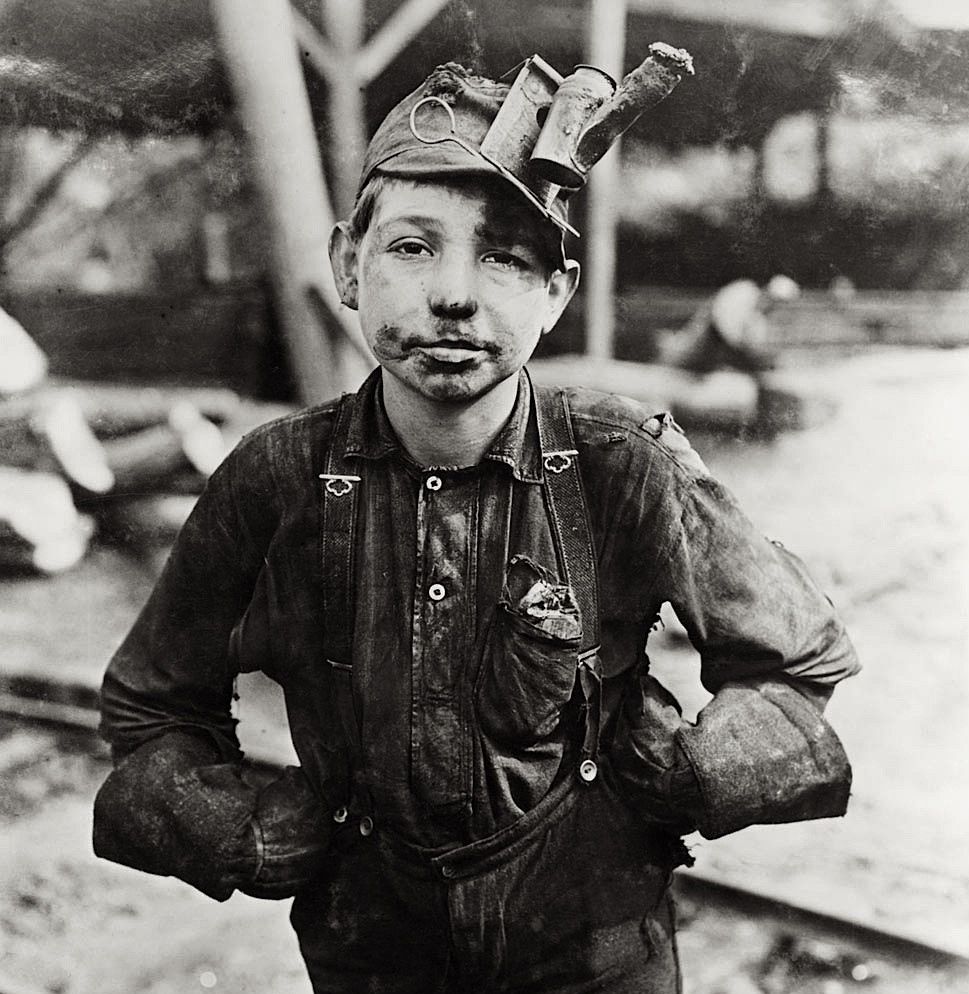In dangerous and dirty child labour, boys as young as eight years, toiling in the nineteenth-century coal mines of mines coal mines of Nova Scotia and British Columbia, were portrayed as happy and carefree. The hours were frequently long and the work was often heavy. Nova Scotia set the first minimum age requirement at 10 in 1873, rising to 12 in 1891, while British Columbia set 12 years as the minimum in 1877. The laws were not always enforced. Men did the actual mining, but young boys worked both at the surface, and in the mines. Cleaning miners’ lamps and running errands were among their lightest chores. They loaded and unloaded the coal tubs that were hoisted to the surface, drove horse and mule teams that hauled the tubs, among other demanding jobs.
The Halifax Morning Chronicle, however, saw the typical boy miner having a “high old time,” in this item published December 4, 1890.
Long before your city boys are astir the pit boy is awakened by the steam whistles, which blow three long blasts at half-past five o’clock every morning, thus warning him that it is time to get up. Breakfast partken of, he dons his pit clothes, usually a pair of indifferent fitting duck trousers, generously patched, an old coat, and with a lighted tin lamp on the front of his cap, his tea and dinner cans securely fastened on his back, he is ready for work. He must be at his post at 7 o’clock. Off he goes, and in a few minutes with a number of others, he is engaged in animated conversation, and having a high old time generally, as he is lowered on a riding rake to the bottom of the slope.
— Canada @ 150 —
